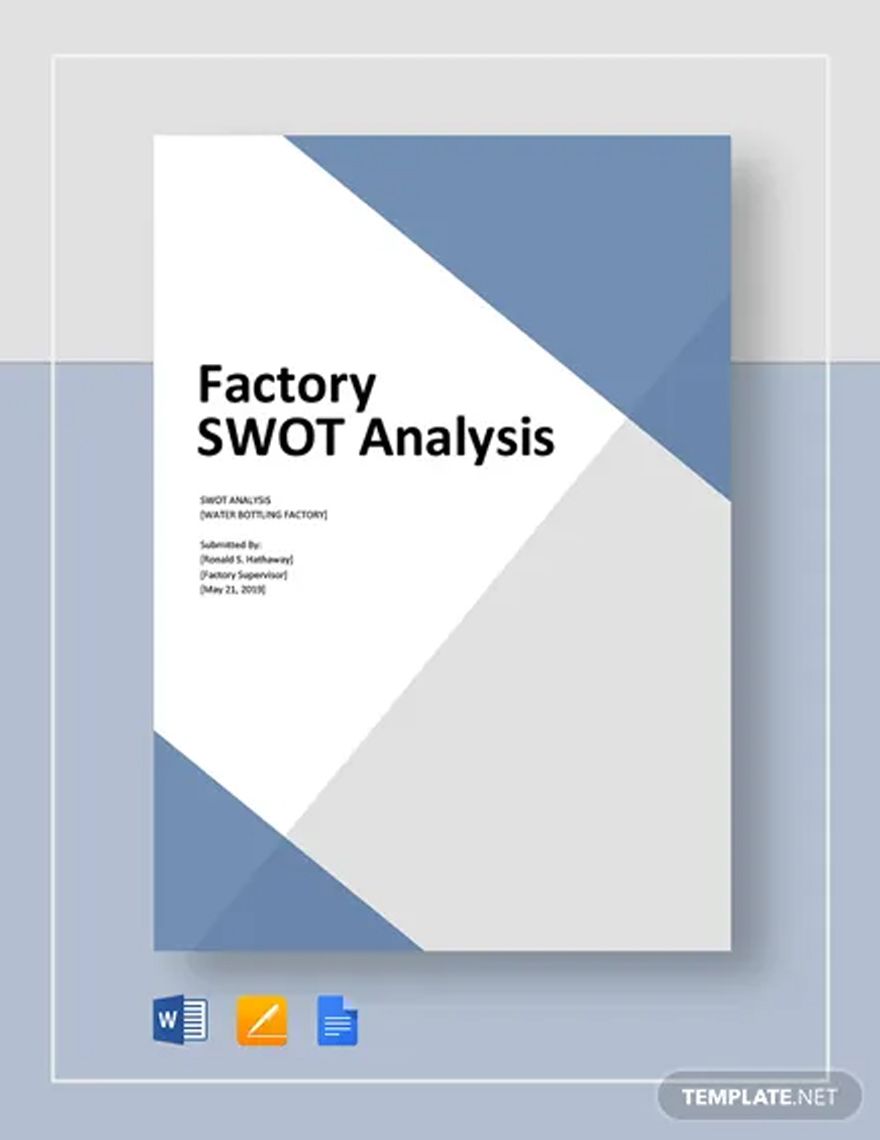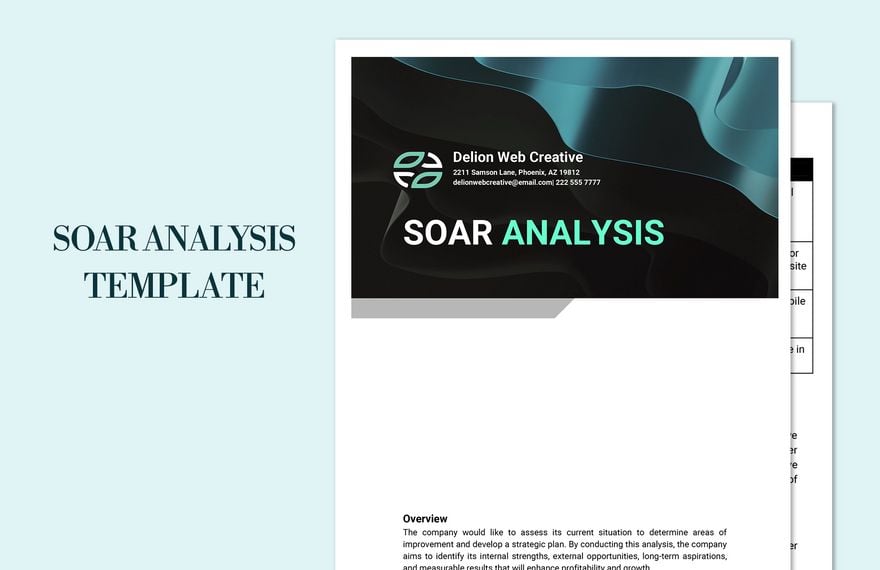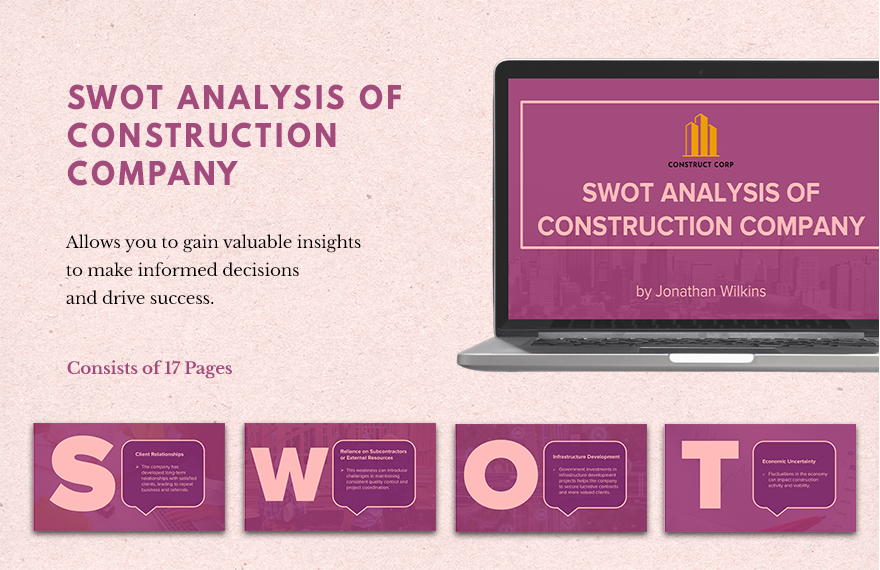Knowing your business, its strengths, and weaknesses help to prepare a risk mitigation plan to overcome its crisis quickly. To help you in achieving that, here is a range of Ready-Made Construction SWOT Analysis Templates. These professionally-written and beautifully-designed templates are 100% customizable, downloadable, editable, and printable. All the templates are available in A4 and the US letter sizes. Use them whenever and wherever you are to get and present a comprehensive idea of your construction project in its entirety. Sign-in to our page today, become our member and start downloading our quality templates now!
How To Do a Construction SWOT Analysis?
Most of us have plans we create daily. Some follow through it, while some don't. However, the type of planning a business or a consulting firm does is much specific and detailed as it involves more than one business avenue. Instead, it consists of a community of workers and employees within the industry. For this reason, this type of template for the executives and CEOs is heaven-sent. If you want to learn in creating an excellent Construction SWOT Analysis, some steps are available below for your consideration.
1. Determine the Goal
Your first step in creating your SWOT Analysis document is determining the goal or the objective of the plan template you wanted to create and use. Especially when working in the construction industry, you must have a clear plan for your actions. Having a goal for your business will lead you to success.
2. Create the Table
With everything set, you can then start your way into drawing a table. On your sheet, you should include the words Strengths, Weaknesses, Opportunities, and Threats at the head of each cell. Try to make the cells of the table as wide as possible, so people can write on it. You can also include a color scheme to differentiate these labels.
3. Write Strengths and Weaknesses
After finalizing the table, you can start putting content on the document. The description is as follows. Strengths are items that your company or corporation has, which may include the number of workers and employees, the available projects, and other things you can consider as a strength of the business. After detailing the strengths section, you can add the weaknesses in the separate part. Weaknesses are the weakness of your company, as a whole.
4. Include the Opportunities and Threats
Below the sections of the strengths and weaknesses should be the opportunities and threats. These are somewhat related to the earlier parts, but they are more of an outside factor. These are beyond the company's premises, such as a rival company and other threats that may arise. The opportunities work the same way, as well. Write on details within the areas as required. Make sure that your planning and management team also are informed of these actions.
5. Finalize Plans From Details
After putting in everything, you may start creating directives and action plans to complement these plans. Include your financial capabilities. You may also improve on the established policy for your company. Make sure that these details are accurate.
































